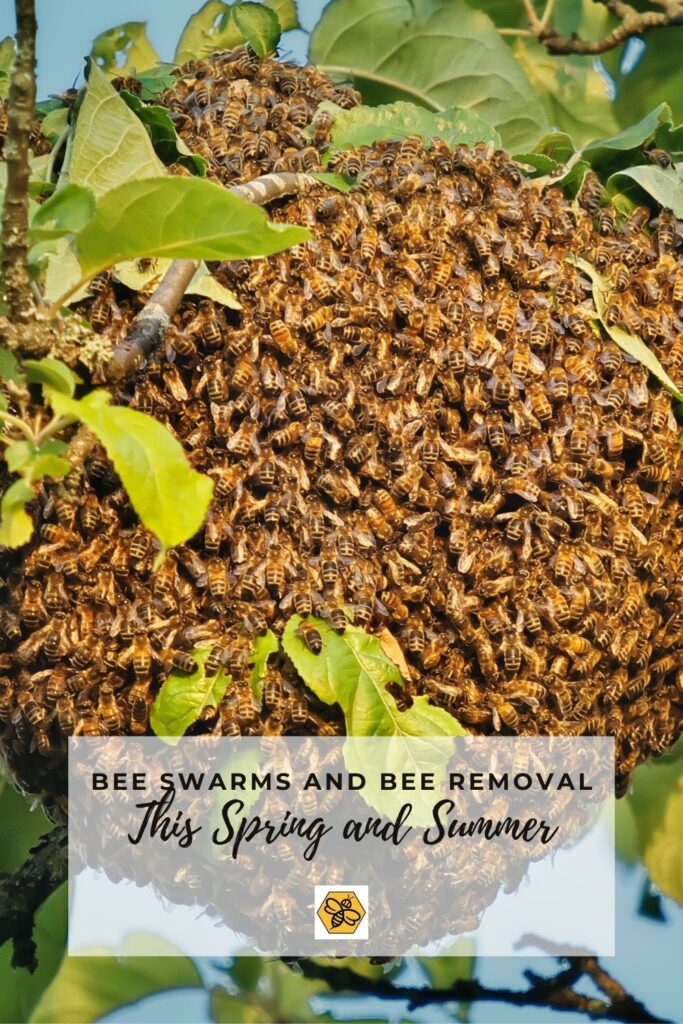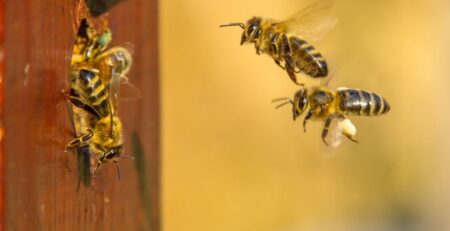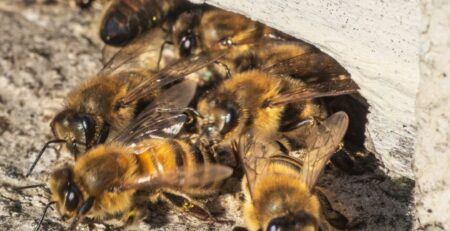Bee Swarms and Bee Removal This Spring and Summer
Springtime is bee swarming season, which means you may be in need of bee removal services. Bee swarms most commonly happen in the spring and summer because of the natural habits of honey bees. Swarms can happen in the autumn as well, but it is less common. So, what is the cause of these clusters? While they may look frightening, bee swarms are not an inherently aggressive force.

Typically, honey bees reproduce during the spring. However, by this point in the season, the queen bee has already populated the colony by laying thousands of eggs a day. This means that the bee colony is too big for their hive. When it’s time to leave the hive, the colony will prepare to divide into two. Worker bees will start to feed the queen less so that she is able to fly off with the swarm. In addition, the worker bees will choose and care for a new queen bee. When the colony is ready to leave, half of the bees will follow the old queen to find a new place to live. The other half will stay in their original hive with the new queen bee.
Crowded hives are a dangerous thing for a colony because the bees can run out of precious resources like nectar, pollen, and water. When you see a swarm of bees, this means that they outgrew their initial home. Swarming allows the colony to expand and orchestrate the reproduction process. Bee colonies travel in swarms to protect one another because, outside of the hive, they are vulnerable. This is why it is especially important for people to leave swarms alone when they are discovered in public spaces. Bee removal experts like The Beeman say that swarms may be found on trees, mailboxes, or other durable structures. This is a temporary resting place for the colony, where they can wait for scout bees to report back with a prime location for their new hive. Bees will surround their queen to keep her safe and lash out if anything agitates the swarm.
Scout bees can take anywhere from a few hours to a few days to find the next hive location. Once this place is determined, they will communicate it with the rest of the colony and the swarm can get moving again. Worker bees will immediately start foraging food and water, caring for the young, and building the honeycomb.
Bee swarms can be frightening when found in a residential area or other public area. However, it is important to remember that the bees are not taking an aggressive stance. The swarm is simply waiting until they can travel to their next home. They have no hive or resources to defend, which means that they will not go out of their way to threaten anyone passing by them. The only time a swarm will attack is if they feel that they are in danger. Spraying water or throwing objects at the swarm, for example, could set off a violent reaction.
If you find a swarm in your neighborhood, then assess the situation and make sure that everyone is aware of it so they can avoid the area. The swarm will likely depart after a few days. If, however, the swarm is in a dangerous location or is staying for much longer than anticipated, then it is necessary to call the professionals. Bee removal experts can safely eliminate the hazard so you can get back to enjoying your sunny spring or summer day.











